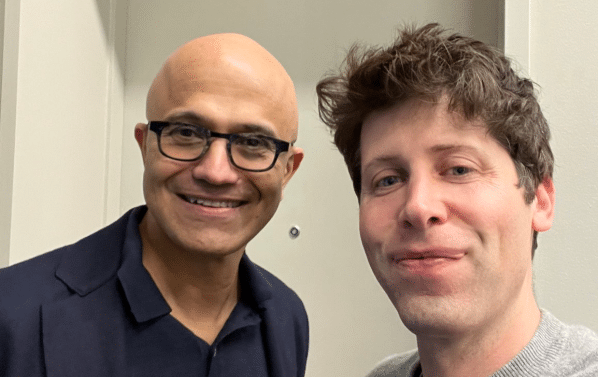
A fake image of an explosion at the Pentagon circulated online yesterday which led to chaos including a brief sell-off in the stock markets.
According to experts, the image was likely made using generative AI. What however helped amplify the hoax was the fact that it was also shared by a verified Twitter account by the name “BloombergFeed.”
The name and the blue verified tick would make many believe that the account is associated with Bloomberg – which it was not.
The account has since been deleted but the harm was done by then.
It is not the first case involving what looks like a Twitter account impersonating an organization or a person.
OSINTdefender, another verified Twitter account with over 335,000 followers also tweeted the image. The handle that shares news about international military conflicts later apologized for “confusion and possible misinformation.”
RT, with over 3 million followers, has posted (since deleted) what looks to be an AI generated photo of an explosion near the Pentagon pic.twitter.com/6Bl7X8ZA2M
— Leonardo Puglisi (@Leo_Puglisi6) May 22, 2023
The image was also shared (and later deleted) by RT – a Russian government-backed media company that was previously known as Russia Today.
The handle has over 3 million followers and tweeted the image with the caption, “Reports of an explosion near the Pentagon in Washington DC.”
Fake Pentagon Attack Images Highlight Risks of AI
The fake Pentagon attack images highlight how generative AI can amplify fake news and create a hoax.
What can make things worse is “verified” Twitter accounts sharing fake news and bringing more credence to them – as happened with the Pentagon attack images.
Notably, earlier this month, Chinese police arrested a person for using ChatGPT to disseminate fake news of a train crash.
Chinese authorities said that more than 20 accounts spread the fake article on a blogging site owned by Baidu and together these got more than 15,000 views.
It was the first arrest made under the country’s law governing “deep synthesis technologies” – which prohibits using AI to spread fake news.
China’s Cyberspace Administration enacted the law in January as the country is concerned about the risks associated with AI.
US AI Regulations Remain a Work in Progress
In the US also, lawmakers are working towards AI regulations and earlier this month the Senate grilled OpenAI CEO, Sam Altman.

OpenAI is the parent company of ChatGPT, which among others counts Microsoft as an investor. Several tech companies are working to build AI capabilities and see the technology as a key long-term driver.
- Read our guide on the best AI stocks
Meanwhile, the images of the fake Pentagon attack also highlight the perils of paid verification that Twitter launched under its new owner Elon Musk.
The company now charges $8 per month for the subscription if taken on the web and $11 on the Google and Apple app stores.
Musk was trying to pivot Twitter from the ad revenues driven model – to a subscription-driven model.
BREAKING: Tesla to try some paid advertising.
Elon Musk shared the decision while answering a question by @realMeetKevin at today's Tesla shareholder meeting. pic.twitter.com/EJBLETNjxB
— Dave Lee (@heydave7) May 16, 2023
However, the billionaire seems to have changed his mind and called advertising “awesome” at the annual investor meeting earlier this month. He also hired Linda Yaccarino, who was previously the head of advertising at NBCUniversal, as the Twitter CEO.
Yaccarino might not have a steady road given the mess Twitter has been in over the last six months. Impersonators using the account for spreading fake news like the images of the Pentagon attack would not help matters either.
Related stock news and analysis
- Best AI Crypto Tokens & Projects to Invest in 2023
- Musk’s Twitter on a Warpath as It Phases Out Legacy Blue Verifications
- What’s Next After EU Fined Facebook $1.3 Billion for Sending Data to the US
What's the Best Crypto to Buy Now?
- B2C Listed the Top Rated Cryptocurrencies for 2023
- Get Early Access to Presales & Private Sales
- KYC Verified & Audited, Public Teams
- Most Voted for Tokens on CoinSniper
- Upcoming Listings on Exchanges, NFT Drops